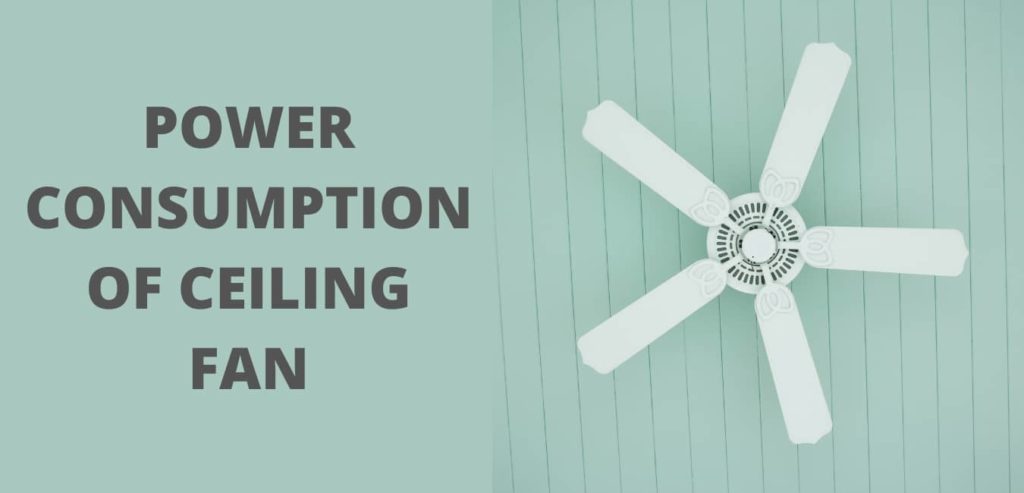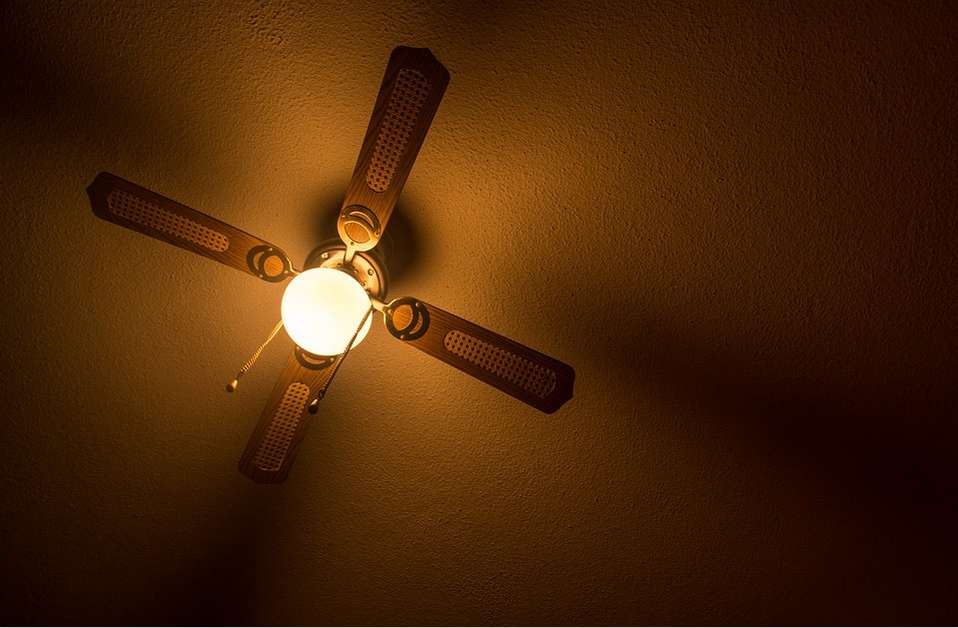The ceiling fan electricity consumption is hardly taken into account in most households. However, the appliance is much ignored and remains ‘unthanked for by the people around. But did you know that the ceiling fan can be the main culprit when it comes to the ‘bomb of a bill’ at the end of the month? It has been estimated that the appliance could be responsible for as much as INR 200 of the total bill at the end of the month. Also, not many people realize that the older the model, the more is power extraction. As most of us neglect the ceiling fan forever, it is not surprising that upgrade and ceiling fans are hardly considered.

Did you know that the ceiling fan watts per hour exceed that of your lighting fixture? While most of us spend our time, energy, and resources in energy-saving lightings, the main source of huge bills could be your rusty old ceiling fan. So, what can you do about this? Well, to start with, it is a smart move to figure out exactly how much electricity is your ceiling fan drawing every month. It is also important to realize that a basic T12 tube light consumes 55 watts of power, whereas a ceiling fan can consume as much as 80 to 90 watts of power. However, not many know, but the main reason for the power consumption in this particular appliance is due to the motor type and size used. Likewise, a power-efficient ceiling fan is more energy-saving as compared to the regular one. Well, you need not worry much as we have here categorized the Ceiling fan types according to their power consumption. This will go a long way in ensuring you make the right choices according to how much power supply you are willing to shell out on a ceiling fan:
This includes the BLDC or DC motor ceiling fans. These fans are manufactured to consume less energy. This range goes a long way in ensuring that your bill amounts remain within limits.
Also Read: Best Room Heaters in India
The 35- 50 Watt Range
These include the size of the fan that runs at high speeds yet manage to maintain the bills at the lower side. Though exclusive with very few brands endorsing them, yet these fans make a great buy when you are concerned with the bills and require cooling at the same time.
Also Read: Best Washing Machine in India
The 50-65 Watt Range
This range includes the most 5-star rated ceiling fans in the market. Also, these are manufactured to ensure that the wattage consumed remains within reasonable levels.
The 65- 80 Watt Range
These are expensive, and this is the reason why most people avoid the energy-efficient fans within this wattage range. However, the ceiling fan energy consumption is quite low in this range, which helps in great savings in the long run.
The 80- 95 Watt Range
These comprise of large motor size, hence the high speed. However, these make for one of the most energy-efficient fans out there.
The 90- 110 Watt Range
These are the high-end types and rare, rightfully so. These draw the most power, and also, the ceiling fans not changed for years fall under this category.
The Ceiling Fan Power Consumption Per Hour

Now, most times, we hardly take notice of the power consumption range. Also, if you have already got yourself a ceiling fan and are wondering about its wattage, here is how you can do it. This simple formula can be used to easily calculate the power consumed by a ceiling fan:
Electricity Consumption = Wattage of the appliance X Kw/hr rate by your electricity provider
Consumption Per Hour: (for the wattage of 60 in this example)
60 Watts X I Hour = 60 Watt-hour or 60/1000 = 0.06 kWh
Rate per hour by most electricity providers in India is INR 3.4 per Kilowatt Hour
Power consumed per hour by the fan = 0.06 kWh X INR 3.4 = INR 0.2/ Hour
Consumption per Day
60 Watts X 24 Hours = 1440 Watt-hour or 1440/1000 = 1.44 kWh
1.44kWh X INR 3.4 = INR 4.90 /day
Consumption per month ( assuming the fan runs for 16 hours a day for the entire month)
60 Watts X 16 Hours X 30 Days = 28800 Watt-Hour or 2880/1000= 28.8 kWh
28.2 kWh X INR 3.4 = INR 97. 92 Per month
Electric fan Consumption Per Year
INR 97.92 X 12 Months = INR 1175
Also Read: Best Juicers in India
About Ceiling Fans

Now we know that the average ceiling fan wattage greatly depends upon its make and manufacture. Also, it is advisable to ensure you take a look at the stats before you splurge your money. Some of the factors that greatly contribute to the power consumption of a particular fan are:
- The radius of the blades.
- The air delivery of the motors.
- The revolution per minute of the motor.
- On average, a ceiling fan draws 60-100 watts of power.
- More number of hours the fan runs, more is the power consumption.
The ceiling fan current consumption calculation is important yet a much-ignored task. Here are a few factors you need to keep a watch on when buying a ceiling fan for yourself:
- Go for the lowest wattage rating.
- The air circulation speed should not be compromised.
- Most ceiling fans in India fall under the 70-75 watts range.
- To be on the safe side, go for a 28-32 watts range. As these are latest, modern and energy-efficient.
Also Read: Best Pedestal Fan in India
Power Consumption Of Ceiling Fans: FAQs
Ceiling fan watt consumption per hour = Watts X Hours running X electric supply charge of your area.
Watts X 24 Hours X electric supply charge of your area.
The fan power consumption = watts X Hours/1000 (for value in kWh).
Normal ceiling fan watt power consumption is relatively low compared to most home appliances, including lights.
Not if you earn a lot. Otherwise, get a low power consumption ceiling fan.
Of course, the fan is cheaper.
Yes, the table fans consume less electricity as compared to the ceiling variety.